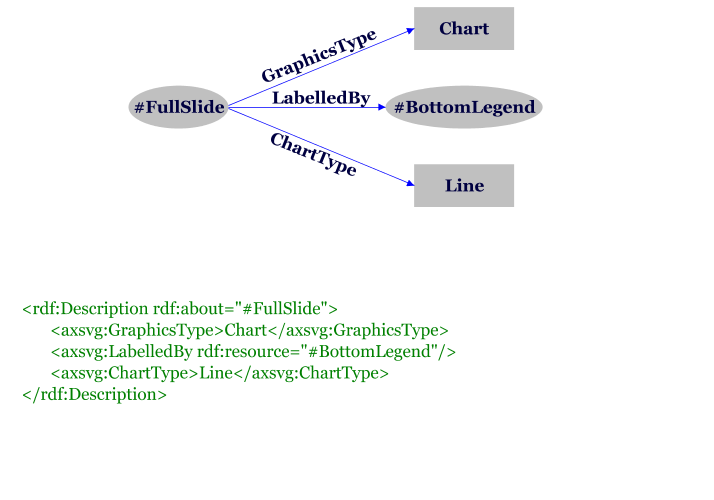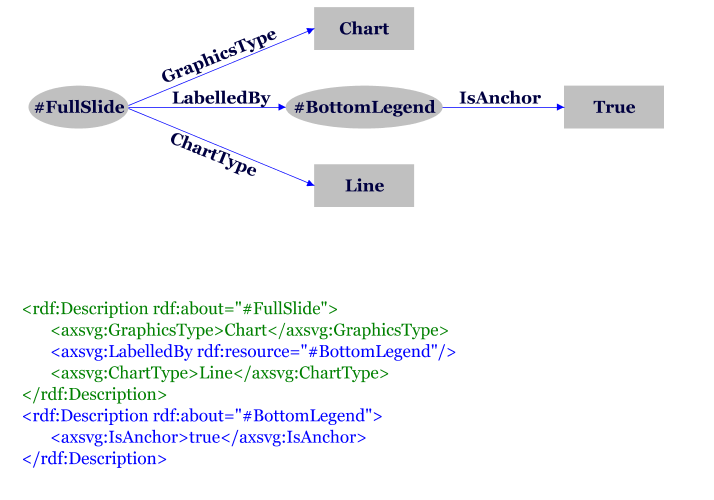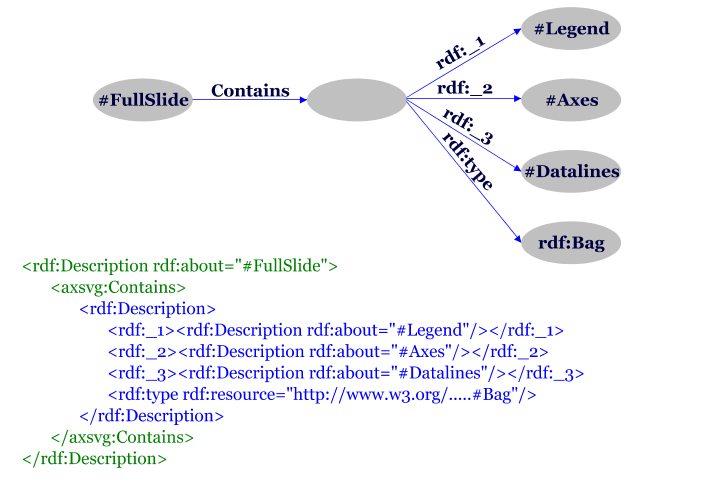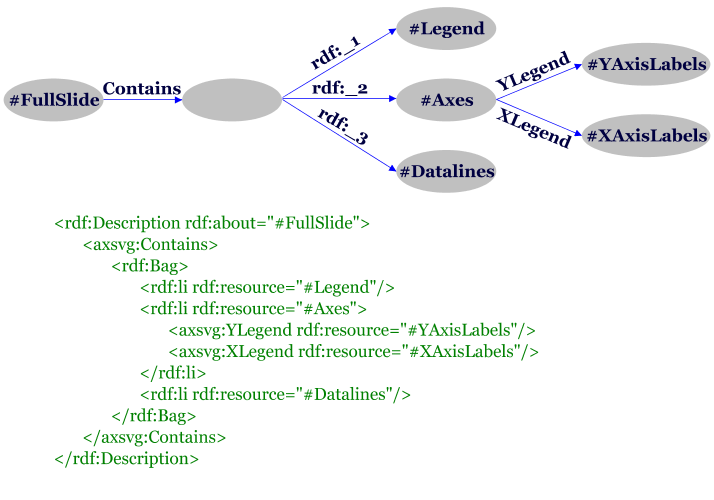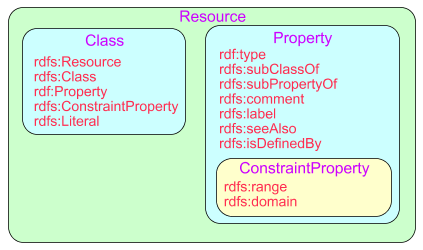From our example (note: it is also in RDF...):
<rdfs:Class rdf:ID="SvgEntity">
<rdfs:comment>The class of SVG elements</rdfs:comment>
<rdfs:subClassOf
rdf:resource="#http://www.w3.org/2000/01/rdf-schema#Resource"/>
</rdfs:Class>
<rdfs:Class rdf:ID="graphicsShape">
<rdf:comment>This should be: Rectangle, Circle, ... </rdf:comment>
<rdfs:subClassOf
rdf:resource="#http://www.w3.org/2000/01/rdf-schema#Literal"/>
</rdfs:Class>
<rdfs:Class rdf:ID="boolean">
<rdfs:comment>This should be true or false</rdfs:comment>
<rdfs:subClassOf
rdf:resource="#http://www.w3.org/2000/01/rdf-schema#Literal"/>
</rdfs:Class>


